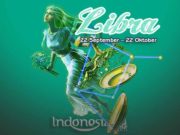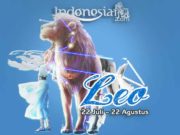South Sumatra is an Indonesian territory located in the southern part of Sumatra Island. The capital of this province is Palembang city. What is interesting and we will discuss here is the culture that is in it.
We will discuss the culture in South Sumatra Province, which includes sections such as ethnicity, regional languages, traditional houses, traditional clothing, traditional arts and so on.
Immediately, let’s discuss below.
South Sumatra Province is inhabited by several ethnic ethnic groups with various regional languages and various religions.
This province was formerly known for its sizable Srivijaya kingdom. The various customs under the Sriwijaya kingdom have various kinds of ethnic races. Following are some of the ethnic groups who have lived in South Sumatra for a long time. These tribes are the Komering Tribe, Palembang Tribe, Gumai Tribe, Semendo Tribe, Lintang Tribe, Kayu Agung Tribe, Lematang Tribe, Ogan Tribe, Pasemah Tribe, Sekayu Tribe, Rawas Tribe, Banyuasin Tribe
Apart from having various ethnic groups, South Sumatra Province itself has several local languages, including:
Palembang Language or Bahasa Melayu: This language is spoken by residents of Palembang City.
Komering / Komerin / Njo Language: This language is used by the people around the districts of Ogan Komering Ilir, Ogan Komering Ulu, Ogan Komering Ulu Selatan, and Ogan Komering Ulu Timur.
Kayu Agung Language: This language is spoken by the people around the Kayu Agung area.
Musi Language: This language is spoken by residents of the Musi Banyuasin Regency and residents of the west of the Musi River and its upstream parts.
Pasemah language: This language is used by residents around the Bukit Barisan Highlands.
Enforcer Language: This language is spoken by residents around Prabumulih.
Semendo language: This language is used by residents in rural areas, namely the west of Baturaja and the south of Pajarbulan.
Sindang Kelingi Language: This language is spoken by the people around Muara Kelinggi.
Enim Language: This language is spoken by the people in southern Muara Enim and eastern and southeastern Lahat.
Lematang language: This language is spoken by the people in the southeast Muara Enim and Sarolangun areas.
Lintang Language: This language is spoken by the people in the area between Lahat and Kapaliang.
Ogan language: This language is used by the people of the Baturaja, Pagerdewa, and west of Kayu Agung areas.
Ranau Language: This language is spoken by the people of southern Muaradua.
Rawas Language: This language is spoken by Musi Rawas District, around Ambacang, and along the Musi River.
Sungkai Language: This language is spoken by the inhabitants of the southwestern part of Kruih and the west of Abung.
Pubian language: This language is spoken by some people of South Sumatra.
Coastal Language: This language is used by some of the population of South Sumatra.
Kubu language: This language is used by some people of South Sumatra.
Among these regional languages, there are languages that have a large number of users compared to others such as Palembang, Pasemah, Komering, Ogan, Coastal, and Pubian languages.
Religion in South Sumatra
Islam is the majority religion in all districts and cities in South Sumatra, while Christianity in Palembang City and Buddhism with large populations are in Palembang City and Banyu Asin Regency. It is estimated that the percentage of the population of the province of South Sumatra is 94.18% Muslim, Protestant Christian 1.99%, Buddhist 1.81%, Catholic 1.13%, Hindu 0.89%
South Sumatra culture
The culture in the province of South Sumatra is not much different from the culture on the island of Sumatra, which is still mixed with Malay culture, Islam, and the Srivijaya kingdom.
The cultural wealth found in South Sumatra includes traditional houses, traditional clothes, dances, traditional weapons typical of the area.
The culture of South Sumatra is well known throughout Indonesia, even favored by many people. Like the Limas house, this house has been adapted in many regions because of the uncomplicated way of making it.
Songket weaving which is typical of South Sumatra is also a favorite of many people. In culinary, there is pempek which is a favorite food of Indonesian people in various regions who also really like this type of food. Immediately, we discuss below.
South Sumatra Traditional House
Traditional houses are traditional buildings for residences or relics from their ancestors, and these relics are scattered throughout Indonesia. The famous traditional house from South Sumatra, namely the limas house, this house is one of dozens of traditional houses in Indonesia. In Indonesia, almost all regions have traditional houses with their own characteristics.
The distinctive feature of traditional houses in South Sumatra, which is different from traditional houses in other provinces, is its pyramid-shaped roof and stilt-shaped house.
Limas Traditional House
The word pyramid is taken from the word five and gold. A pyramid house is a house with a stilted shape and a pyramid-shaped roof. What’s interesting about this house is that the floor of the pyramid house is made with terraces.
Steps or steps on the floor are commonly called kekijing. The pyramid house usually has 2 to 4 steps kekijing.
The pyramid house has a support pole with a height of about 1.5 meters – 2 meters from the ground. The pyramid house is divided into 3 rooms with different functions, namely:
The vestibule: This room is usually used for resting and relaxing family members.
Middle room: As for the middle room there are several kekijing. Each kekijing has two windows located on the right and left. In the last part of the kekijing there is a wall cabinet that is used for a partition.
Back room: Then for the back room is the kitchen which is used for cooking.
Traditional House Cara Gudang
This house is named Bara Gudang because its elongated shape resembles a warehouse. This house has a support pole about 2 meters high. The roof of this house is in the form of a pyramid and there is no kekijing in this house.
In its manufacture, the surrounding community usually uses this warehouse method from a good wood arrangement, such as:
Tembesu wood
Evening
Unglen.
This house also has three rooms just like the pyramid house with the function of the room which is almost the same as the pyramid.
Traditional Raft House
Based on the name, this house is floating on a raft, the arrangement of this raft consists of wooden blocks and bamboo pieces, in each corner are installed poles which are then tied to posts embedded in the river bank.
To tie a pole with a post, a rattan rope is usually used.
This house has a two-plane roof only, the roof on the raft is called the awning roof. This raft house is divided into two rooms with two doors. The first door faces the river while the other door faces the river bank.
There are two windows which are usually located on the right and left of the house. The front of the house is equipped with a bridge to connect the house and the mainland.
Tatahan Traditional House
It is called the house of order because in this house there are many carvings that are carved or inlaid. This house is built on a pillar as high as 1.5 meters. This house is made of durable wood, namely Tembesu wood and chelate wood.
This inlay house is divided into two rooms with the following functions:
The vestibule and living room: The vestibule is usually used for cooking. In this vestibule there is land for placing the stove.
Living room: serves to carry out daily activities. At night this room is used for sleeping. When the owner of the house is having a desire, this room will be reserved for guests who come.
Kilapan House
Unlike the house arrangement, this house does not have decorations in the form of carvings, on the walls it is only enough to smooth it using a crab or sugu. The shape of this house is on stilts with a height of about 1.5 meters. The pillars in this house are not embedded in the ground, but only on the ground.
The poles in this house are called sitting poles, this Kalipan house has two rooms. Namely the front room & living room with the same function as the inlay house.
Kingking’s house
The shape of this kingking house is a square with a roof made of bamboo which is split into two and is commonly known as gelumpai. The house of the kingking house is the same as the inlay house. This house is included in the house on stilts and uses a sitting pole.
Previously, we also discussed traditional houses from East Java province in the article on East Java Culture. Don’t forget to read it too.
Traditional clothing of South Sumatra
The province of South Sumatra currently has at least two traditional clothes that are quite unique and interesting for us to study. These traditional clothes are usually worn during certain occasions, such as:
Traditional wedding ceremony
Festival
And other cultural events.
So these traditional clothes are not worn on any occasion, especially for daily clothing. There are two traditional clothes of South Sumatra, namely:
1. Postage Impression
2. Aesan Gade.
Why is it called Aesan? Aesan itself is taken from the Palembang language which means clothes, clothes, or clothes. Here is a little explanation of these traditional clothes:
Traditional clothing Aesan Paksangko
The first traditional clothes of South Sumatra were known as Aesan Paksangko. This traditional dress has a philosophical meaning that symbolizes the greatness of the people of South Sumatra.
This Palembang traditional dress is generally seen more often at a wedding reception used by the bride and groom, with a combination of red and gold. By using this traditional outfit, the appearance of the two brides will be even more elegant.
Traditional clothing of Aesan Gede
The second traditional clothing of the province of South Sumatra is called Aesan Gede. The difference between this outfit and Aesan Paksangko is that Aesan Gede’s traditional clothes combine more pink & gold colors.
South Sumatra Traditional Arts
The traditional arts that we will discuss in the province of South Sumatra include traditional dances, traditional musical instruments, traditional weapons and so on. Here we discuss one by one below.
Traditional dances of South Sumatra Region
The following dances in the South Sumatra area are Silampari Traditional Dance, Penguton Traditional Dance, Beladas Girl Traditional Dance, Petake Gerinjing Traditional Dance, Dendan Traditional Dance, Raja Buaye Konga Ballet Dance, Seluang Mudik Traditional Dance, Madik Traditional Dance (Nindai) , Putri Bekhusek Traditional Dance, Tanggai Traditional Dance, Traditional Fence Dance, Gending Sriwijaya Traditional Dance, Songket Weaving Traditional Dance, Kebagh Traditional Dance, Kubu Traditional Dance, Mejeng Besuko Traditional Dance, Gegerit Traditional Dance, Kipas Serumpun Traditional Dance, Rodat Traditional Dance Cempako, Sebimbing Sekundang Dance.
South Sumatra Traditional Musical Instruments
South Sumatra has several musical instruments used in traditional cultural performances such as Kenong Basemah Palembang, Gambus, T Terbang, Burdah or Gendang Oku, Tenun, Violin, Trumpet, Gong, Genggong, Kolintang, Seruling, Marawis, Kecapi.
South Sumatra Traditional Weapons
South Sumatra has several traditional weapons including the Trisula Spear, Keris, Skin, Khudok.
South Sumatra Traditional Ceremony
South Sumatra has several traditional ceremonial traditions such as Ngobeng, Alms Rame, Funeral, Madik, Mendengguk, Ngebet, Berasan, Mutuske Kato, Nganterke Belanjo, Ngocek Bawang, M Uploads, Rudat and Kuntau Kumpulan, Nyanjoi, Nyemputi, Ngater Penganten, Bekarang Iwak, Circumcision
Typical food of South Sumatra
The following is a list of typical foods from the province of South Sumatra. They have several specialties that taste very good to eat. Delicious foods from Sumatra Sellatan are Pempek, Tekwan, Laksan, Celimpungan, Burgo, Lakso, Martabak Palembang, Mie Celor, Pindang Ikan, Pindang Tulang, Cucuk Manis beef satay, pork noodles, red bean ice, Kemplang, Palembang coffee, Godo-Godo , Gulo Puan, Roti Koing, Sambal Tempoyak.
Hopefully this article is very useful for you. Come on, get interesting information from Indonesiar.com to add your insights and knowledge about Indonesia’s excellence. Share this article with everyone.






























